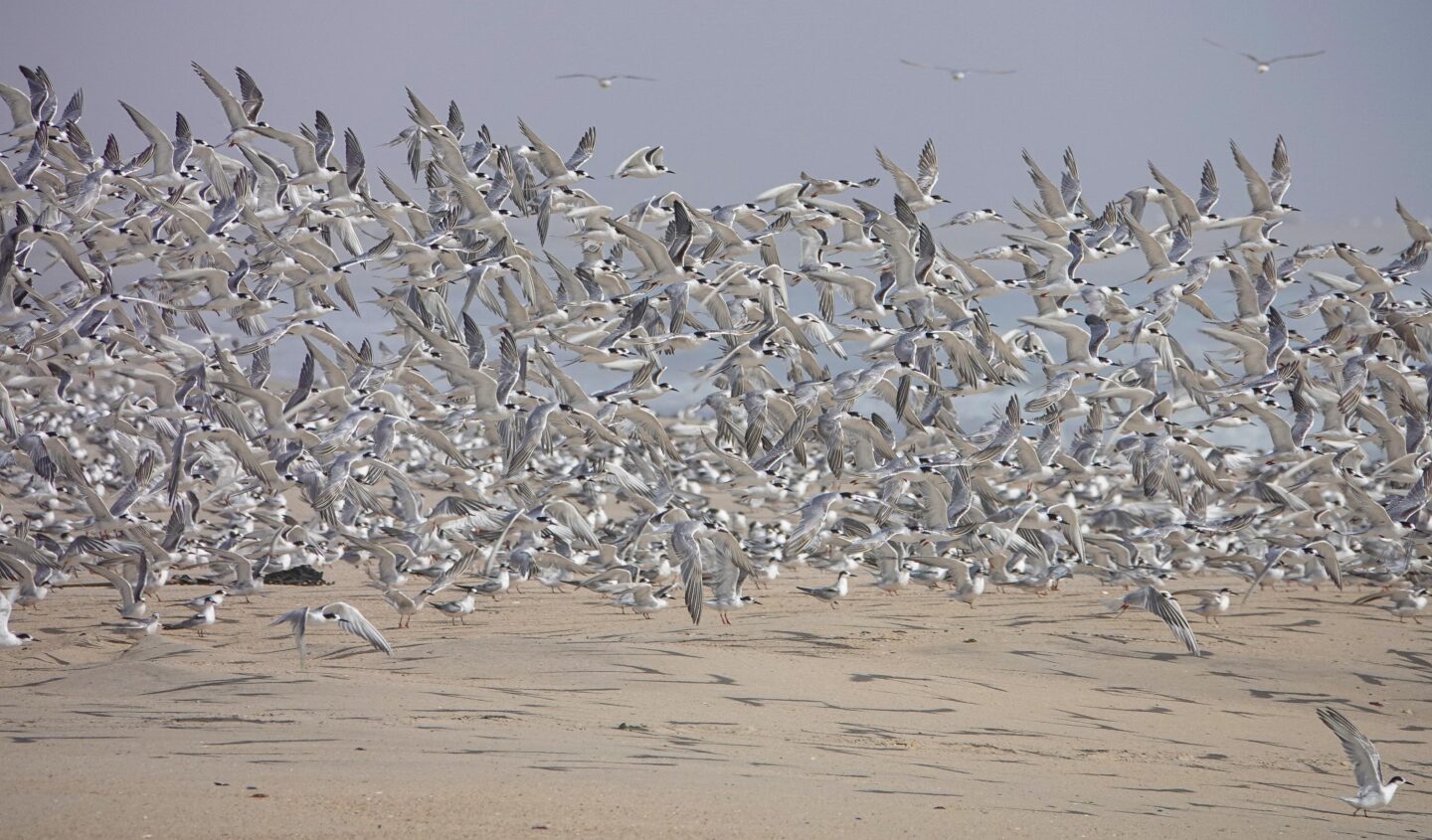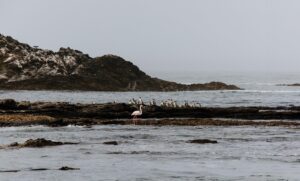

Ferns turning in a dance of flight
Text Kirsty Watermeyer | Photographs Kirsty Watermeyer
From the Autumn 2025 issue
The Skeleton Coast, known for its harsh landscapes, holds many unexpected surprises – none more delightful than the sight of thousands of terns flying in a seemingly synchronised dance above sandy beaches.
As I drove down the coast, I stumbled upon a spectacle that felt like nature’s own aerial ballet. A huge group of terns, consisting mostly of Common Terns, their sharp black caps contrasting against the clear blue sky, flitted and dived in synchrony over the sand and surf. With their slender bodies, long, angular wings and graceful flight patterns, watching them was an absolute display of harmony.
The Common Tern (Sterna hirundo), often called the “sea swallow” for its long tail and delicate flight, is a common sight along Namibia’s coastline. These terns breed in temperate regions of Europe, Asia and North America, and while they are not native to Namibia, they can be spotted during migration, often following the fish stocks along the coast. What makes the Common Tern particularly special is its social nature. Unlike many seabirds that prefer solitary lives, Common Terns thrive in noisy colonies, often in their thousands, especially during the breeding season. While the colonies typically number around 2,000 birds, some can swell to as many as 20,000. Interestingly, they often include other tern species, such as the Arctic Tern and the Swift Tern, both of which I saw joining in the dance of flight that morning. Arctic Terns are often confused with Common Terns because they look very similar, while the Swift Tern is much larger, with some individuals having a wingspan of up to 1.2 metres. The Swift Tern also has a distinctive crest, which is why it was renamed to the Greater Crested Tern.
Incredibly migratory, Common Terns follow the ebb and flow of fish stocks. Their populations fluctuate depending on the availability of food, particularly sardines and anchovies. These terns often breed in northern latitudes, but during the southern hemisphere’s winter, they migrate down the western coast of Africa, reaching as far south as Namibia. Common Terns have one of the longest migrations of all birds, with an average round trip of 35,000 kilometres each year. Their migration routes can take them across vast distances, from their breeding grounds in the Baltic Sea and Scandinavia to the warmer shores of Southern Africa.
Their presence along the Skeleton Coast is a reminder that this seemingly barren stretch of land harbours a rich and vibrant ecosystem beneath the surface. The Common Tern, with its long, graceful flight and strong community bonds, is a symbol of nature’s interconnectedness – a migratory traveller that links the distant corners of the Earth, united by the same skies and oceans.
These terns are a living testament to the dynamic life that thrives along Namibia’s shores, where the ocean’s rhythm connects all living things. As I sat along the shoreline, watching their incredible display while their vast numbers turned the sky from blue to grey and white, I could not help but marvel at their grace as they swooped low over the waves in perfect unison. In that moment, it felt as if the very spirit of the Skeleton Coast – wild, untamed and full of vigour – was embodied in their flight. TN
More to explore

Discover Airlines launches a new direct flight between Windhoek and Munich






